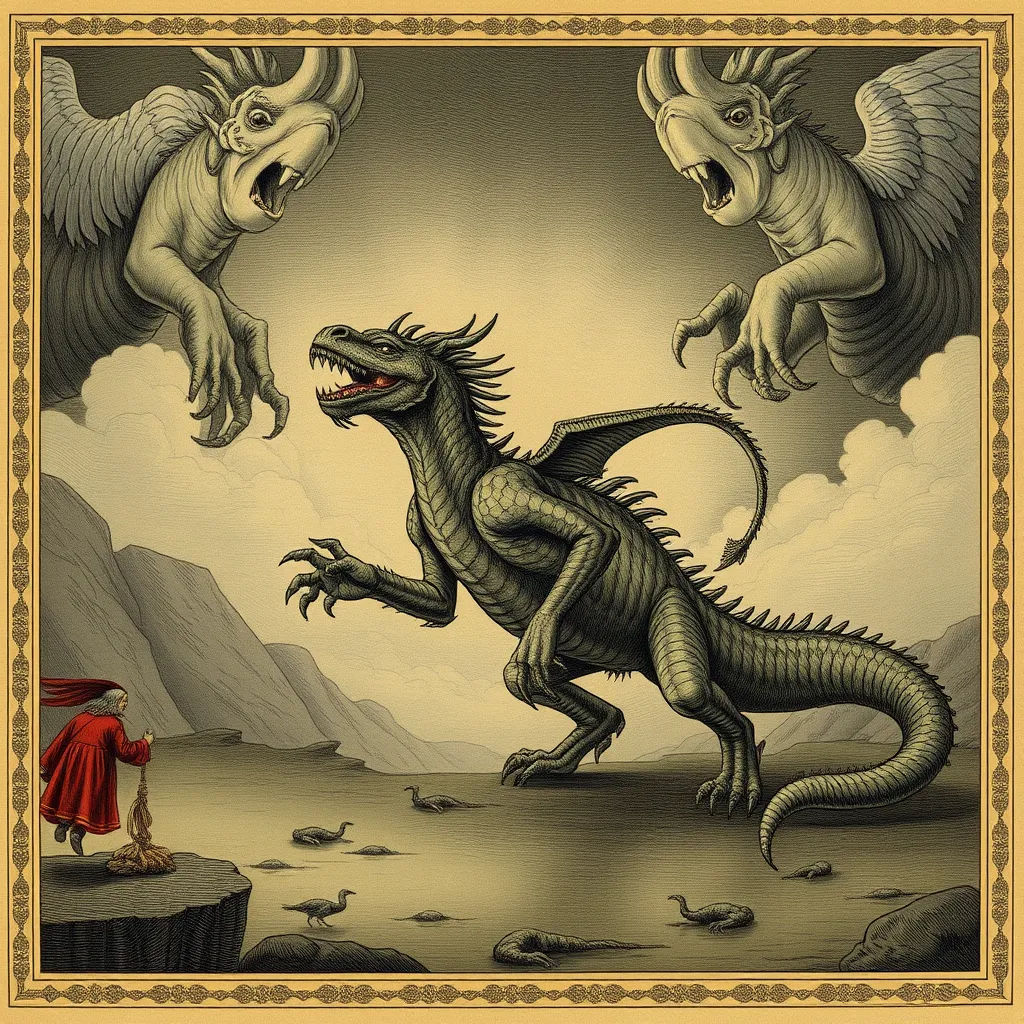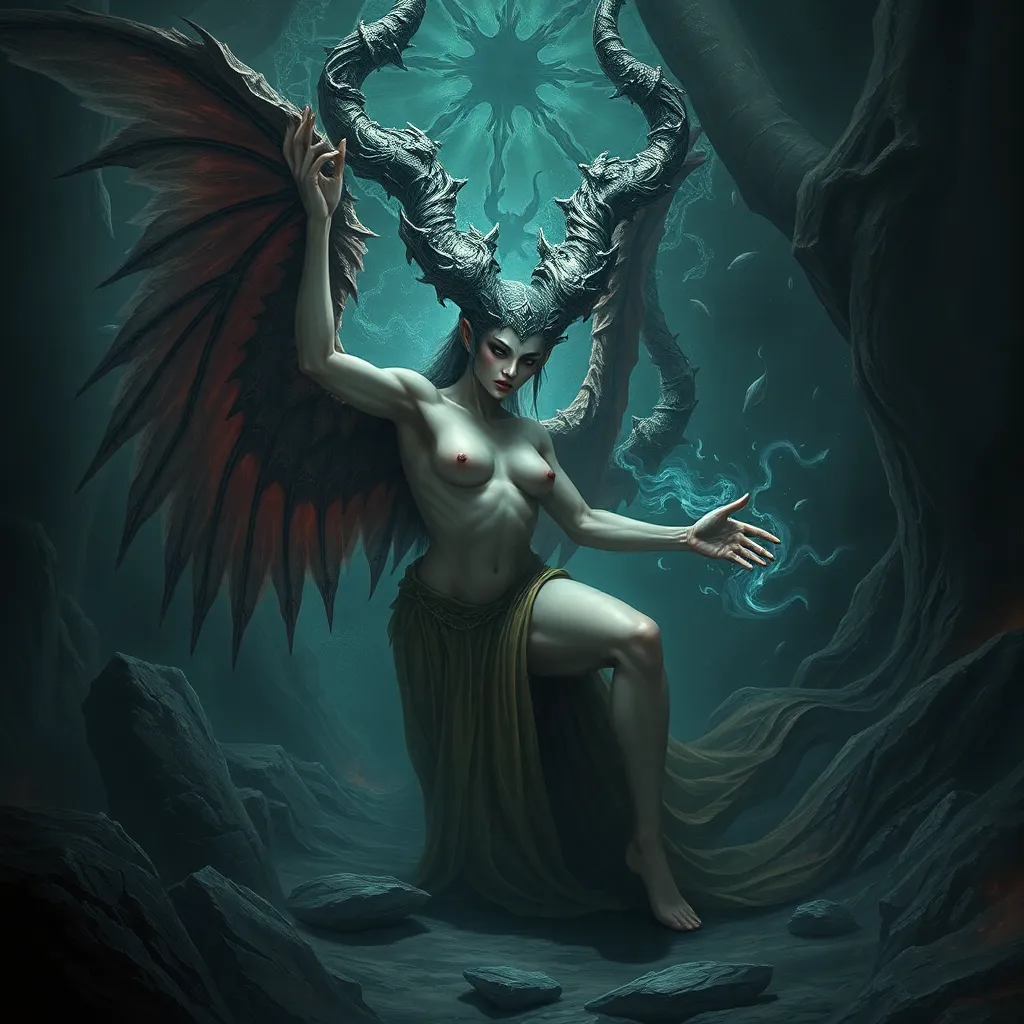The Phoenix and the Serpent: The Symbol of Transformation, Renewal, and the Cycle of Time
I. Introduction
The Phoenix and the Serpent are two powerful symbols that represent transformation, renewal, and the cyclical nature of existence. Throughout history, these mythical creatures have captivated the human imagination, serving as metaphors for the profound changes that individuals and societies undergo. Transformation and renewal are essential themes across various cultures, highlighting the importance of resilience, rebirth, and the acceptance of life’s inevitable changes. This article explores the historical context, cultural significance, and modern interpretations of the Phoenix and the Serpent, shedding light on their enduring relevance in our lives.
II. Historical Context of the Phoenix and the Serpent
A. Origins of the Phoenix in mythology
The Phoenix is a legendary bird that is often associated with fire and rebirth. Its origins can be traced back to several ancient cultures:
- Ancient Egyptian beliefs: In Egyptian mythology, the Phoenix, known as the Bennu, was a symbol of the sun, creation, and renewal. It was believed to rise from the ashes of its predecessor, embodying the cycle of life and death.
- Greek and Roman interpretations: The Greeks adopted the Phoenix myth, depicting it as a magnificent bird that would engulf itself in flames and rise anew from its ashes. Roman poets, such as Ovid, further popularized the story, emphasizing themes of immortality and transformation.
B. The Serpent’s symbolism across cultures
The serpent is another potent symbol found in various mythologies worldwide, often representing dual aspects of nature:
- Role in creation myths: In many cultures, serpents are featured in creation stories. For instance, in Hindu mythology, the cosmic serpent Vishnu rests on the serpent Ananta during the creation of the universe.
- Associations with wisdom and rebirth: In numerous traditions, serpents are seen as symbols of wisdom and healing, such as in the ancient Greek caduceus, which represents medicine and health.
III. The Phoenix: A Symbol of Renewal
A. The life cycle of the Phoenix
The Phoenix is renowned for its remarkable life cycle, characterized by death and rebirth:
- Death and rebirth cycle: According to legend, the Phoenix lives for several hundred years before it builds a nest of aromatic wood and sets itself on fire. From the ashes, a new Phoenix is born, symbolizing renewal and the continuity of life.
- Significance of fire in its transformation: Fire represents not only destruction but also purification and regeneration. It is through fire that the Phoenix transcends its previous form, emerging stronger and more vibrant.
B. Cultural representations of the Phoenix
The Phoenix has been depicted in various forms of literature and art throughout history:
- Literature and art: The Phoenix appears in works such as the poems of the ancient Greek poet Pindar, as well as in Renaissance art, where it symbolizes resurrection and hope.
- Modern interpretations in popular culture: Today, the Phoenix is often seen in literature, films, and branding, symbolizing triumph over adversity, such as in the “Harry Potter” series and various superhero narratives.
IV. The Serpent: A Symbol of Transformation
A. The serpent’s ability to shed its skin
The serpent’s unique ability to shed its skin serves as a powerful metaphor for transformation:
- Metaphor for personal growth and renewal: Shedding skin symbolizes letting go of the old self to embrace new growth and potential, representing personal evolution.
- Symbol of healing in various traditions: In many cultures, the shedding of skin is associated with healing and renewal, further emphasizing the serpent’s role as a transformative figure.
B. The duality of the serpent
The serpent embodies a complex duality, representing both positive and negative aspects:
- Good vs. evil connotations: In some traditions, the serpent is viewed as a benevolent guide, while in others, it is associated with temptation and evil, such as in the biblical story of Adam and Eve.
- Representation in religion and mythology: Serpents appear in various religious texts and mythologies, symbolizing both danger and wisdom, as seen in the stories from Hindu, Norse, and Mesoamerican traditions.
V. The Interrelationship Between the Phoenix and the Serpent
A. Symbolic connections in mythology
The Phoenix and the Serpent share profound symbolic connections:
- Shared themes of transformation and renewal: Both symbols illustrate the cyclical nature of life, emphasizing rebirth and the importance of embracing change.
- Examples of stories featuring both symbols: In various myths, such as those from alchemical traditions, the Phoenix and the serpent often appear together, representing the process of transformation and the unification of opposites.
B. How they complement each other in understanding the cycle of life
Together, the Phoenix and the Serpent illustrate the intricate balance of life’s cycles, highlighting the necessity of death for new beginnings. They remind us that transformation is a natural part of existence, and embracing it can lead to profound personal and spiritual growth.
VI. The Cycle of Time: Lessons from the Phoenix and the Serpent
A. Philosophical implications of transformation
The stories of the Phoenix and the Serpent offer valuable philosophical insights:
- Understanding impermanence and change: Both symbols teach us about the inevitability of change and the importance of accepting life’s transitory nature.
- Embracing cycles of life and death: Recognizing the cyclical patterns in our lives can help us navigate challenges and appreciate moments of renewal.
B. The importance of renewal in personal development
Personal development is often rooted in the ability to embrace transformation. The lessons from the Phoenix and the Serpent encourage individuals to let go of limiting beliefs, adapt to change, and pursue continuous growth.
VII. Modern Interpretations and Applications
A. The Phoenix and the Serpent in contemporary society
In today’s world, the Phoenix and the Serpent maintain their relevance through various avenues:
- Symbolism in self-help and personal growth movements: Many self-help philosophies use these symbols to convey messages about resilience, healing, and the journey of self-discovery.
- Use in branding and corporate identity: Companies often adopt the Phoenix as a symbol of innovation and renewal, while the serpent can represent wisdom and adaptability.
B. The relevance of these symbols in personal and collective transformation
The Phoenix and the Serpent serve as reminders of our capacity for change, both on an individual level and within society as a whole. They inspire us to embrace transformation, learn from our experiences, and strive for growth.
VIII. Conclusion
In summary, the Phoenix and the Serpent are powerful symbols of transformation and renewal, deeply rooted in human history and mythology. Their significance transcends time, offering valuable lessons about the inevitability of change and the importance of embracing growth. By reflecting on these symbols, we can better understand our own journeys and the cycles of life that shape our experiences. Embracing transformation not only enriches our personal development but also fosters resilience in the face of adversity.



